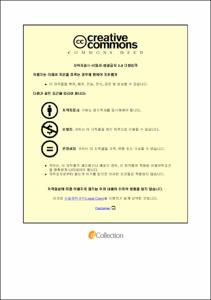Quenching-Tempering 조건이 탄소강 플랜지의 미세조직과 기계적 물성에 미치는 영향과 후열처리 공정 최적화를 위한 머신러닝용 데이터 엔지니어링
- Alternative Title
- Effects of Quenching and Tempering Conditions on Microstructures and Mechanical Properties of Hot Forged Carbon Steel Flange and Machine Learning Data Engineering for Optimization of the Post-heat Treatment
- Abstract
- It was investigated to optimize the post-heat treatment process for flange with high strength and high toughness. Machine learning was introduced for efficiency using the data gathered by experiments. The flange was divided into 40 locations according to cooling rate at quenching and data were constructed for 12 types of tempering conditions of 40 locations. Thermal profiles of each flange location were measured by FEM simulation and the fraction of second phase was characterized by in-house code automatically. Tensile and hardness tests were carried out at room temperature and Charpy impact test was performed at –46℃. A predictive model by CNN was learned by using total of 2,880 data collected by the experiments. This model showed meaningful possibility for the prediction of mechanical properties only with a small amount of data consisting of time-series thermal profile.
It was investigated the effect of three locations selected by the cooling rate and various tempering conditions on the mechanical properties and microstructure of flange. It was observed that all specimens showed the distinct multiphase microstructure consisted of matrix and second phases which were decomposed during various tempering conditions. With the decrease of cooling rate of quenching, hardness and strength were decreased while elongation was increased and low temperature toughness was not significantly influenced. After tempering, hardness and strength were decreased while low temperature toughness was improved. However, the effect of tempering on the elongation was inconsistent.
- Issued Date
- 2020
- Awarded Date
- 2020. 8
- Type
- Dissertation
- Keyword
- flange F70 steel heat treatment multiphase microstructure mechanical property machine learning
- Publisher
- 부경대학교
- Alternative Author(s)
- Haeju Jo
- Affiliation
- 부경대학교 대학원
- Department
- 대학원 재료공학과
- Advisor
- 안용식
- Table Of Contents
- Ⅰ. 서론 1
Ⅱ. 이론적 배경 5
1. Quenching & Tempering 5
가. Quenching 5
나. Tempering 6
(1) Spheroidization 7
(2) Coarsening 7
2. 미세조직의 형태학적 분류 및 특징 9
가. Lath Bainitic Ferrite 9
나. Acicular Ferrite 9
다. Granular Bainitic Ferrite 10
라. Quasi Polygonal Ferrite 10
마. Martensite 11
바. Martensite-Austenite constituent 11
사. Degenerated Pearlite / Pearlite 11
아. Carbide 11
3. Convolutional Neural Network 기법 14
가. 인공지능과 CNN 기법의 채택 14
나. CNN을 활용한 데이터 분석 방법 19
(1) 데이터 전처리 19
(2) CNN을 활용한 예측모델 구축 및 학습 20
(3) 학습된 예측모델의 평가 22
Ⅲ. 재료 및 실험방법 24
1. 실험재료 24
2. 후열처리 24
3. Data 추출 위치 선정 25
4. Data 추출 방법 28
가. 온도이력 데이터 28
나. Second phase 분율 데이터 28
(1) 미세조직 분석 시편 준비 28
(2) Second phase 분율 자동측정을 위한 threshold값 지정 29
(3) Second phase 분율 데이터 추출 방법 29
다. 경도 데이터 30
라. 인장 강도, 항복 강도 및 연신율 데이터 30
마. 샤르피 충격 시험 데이터 30
5. CNN을 활용한 예측모델 학습 및 평가 방법 34
가. 데이터 전처리 34
나. 데이터 분리 34
다. CNN 모델 구축 및 학습 35
라. 평가 35
IV. 결과 및 고찰 37
1. 온도이력 데이터 37
2. Second phase 분율 39
3. 미세조직 분석 42
가. 냉각속도에 따른 미세조직 분석 42
나. Tempering에 따른 미세조직 분석 43
4. 경도 50
5. 인장 강도, 항복 강도 및 연신율 54
6. CVN impact energy 63
7. 전체 DATA SET 67
8. CNN을 활용한 예측모델 평가 69
Ⅴ. 결론 72
참고문헌 74
- Degree
- Master
- Files in This Item:
-
-
Download
 Quenching-Tempering 조건이 탄소강 플랜지의 미세조직과 기계적 물성에 미치는 영향과 후열처리 공정 최적화를 위한 머신러닝용 데이터 엔지니어링.pdf
기타 데이터 / 11.63 MB / Adobe PDF
Quenching-Tempering 조건이 탄소강 플랜지의 미세조직과 기계적 물성에 미치는 영향과 후열처리 공정 최적화를 위한 머신러닝용 데이터 엔지니어링.pdf
기타 데이터 / 11.63 MB / Adobe PDF
-
Items in Repository are protected by copyright, with all rights reserved, unless otherwise indicated.